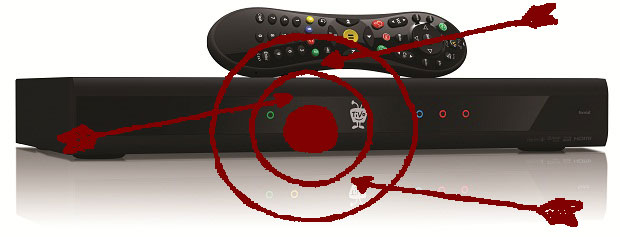Excuse me while I let off a little steam. I was a tad hasty in my proclamation yesterday that the TiVo Premiere changes everything. It doesn’t. In fact, it doesn’t change anything. It’s a big pile of disappointment and missed opportunity.
TiVo doesn’t release hardware that often so when it does, it better be good. Tivos have a ridiculously long shelf life. The TiVo HD XL was their last hardware update and that came out in September 2008. That model just added the THX certification and increased the storage capacity over the TiVo HD, though, which launched in the Summer of 2007. Even then the UI they used was twice as old.
Needless to say many TiVo fans were pumped about yesterday’s events. Our boxes were starting to get a little stale and at least I think most expected TiVo to take care of its loyal customer base like it has in the past. But that’s not going to happen. The Series4 TiVo Premiere UI is not getting pushed to Series3 hardware as we found out yesterday. It has something to do with the new Adobe Flash software requiring a dual-core chip or some nonsense like that.
But then there’s the new hardware, too. In case you didn’t notice, the new hardware is almost exactly the same has the HD and HD XL models, besides the additional computing power to run the swanky Flash interface. They have the same measly 320GB and 1TB hard drive options as the previous models. Hard drives are cheap now and I can’t be the only that expected TiVo to out 1TB and 2TB options. I don’t even think you can buy a 320GB hard drive anymore.
Arris had the right idea when it stuffed a third high-def tuner in its Moxi HD DVR, allowing the box to record three HD stations at one time. After all a single multistream CableCARD can handle six channels simultaneously. But alas, the TiVo Premiere only has two HD tuners.
TiVo previously has always been great about treating its loyal subscribers with fresh UI updates. Even 5 to 7 year old boxes often got most of the new features when they rolled out. TiVo so far claims that the Series3 boxes cannot handle the 100% Flash UI, which could very well be true. So why then develop on such a resource-intensive platform? Other programs like Boxee and XBMC have shown the world that beautiful interfaces can be designed to run on even the most simple hardware.
At least TiVo continued to innovate in the remote market and turned its famous peanut remote into a QWERTY slider. There’s a lot to love there besides the fact that it’s not included and requires an additional dongle to work. No matter, we’ll take a QWERTY remote anyway we can get it.
Don’t get me wrong, the new interface is wonderful. It’s just sad that TiVo clearly lost its way and forgot about its loyal customer base. They have to be loyal, too. Content provider DVRs offer the same basic functionality for a fraction of the price. But us TiVo owners actually spent hundreds to buy our DVRs and still pay a higher monthly fee than you can lease a DVR from a cable company. That’s because they offer a lot more features, a more pleasing user experience, and at least we thought they were backed by a customer-focused company. That perception changed a bit yesterday.
